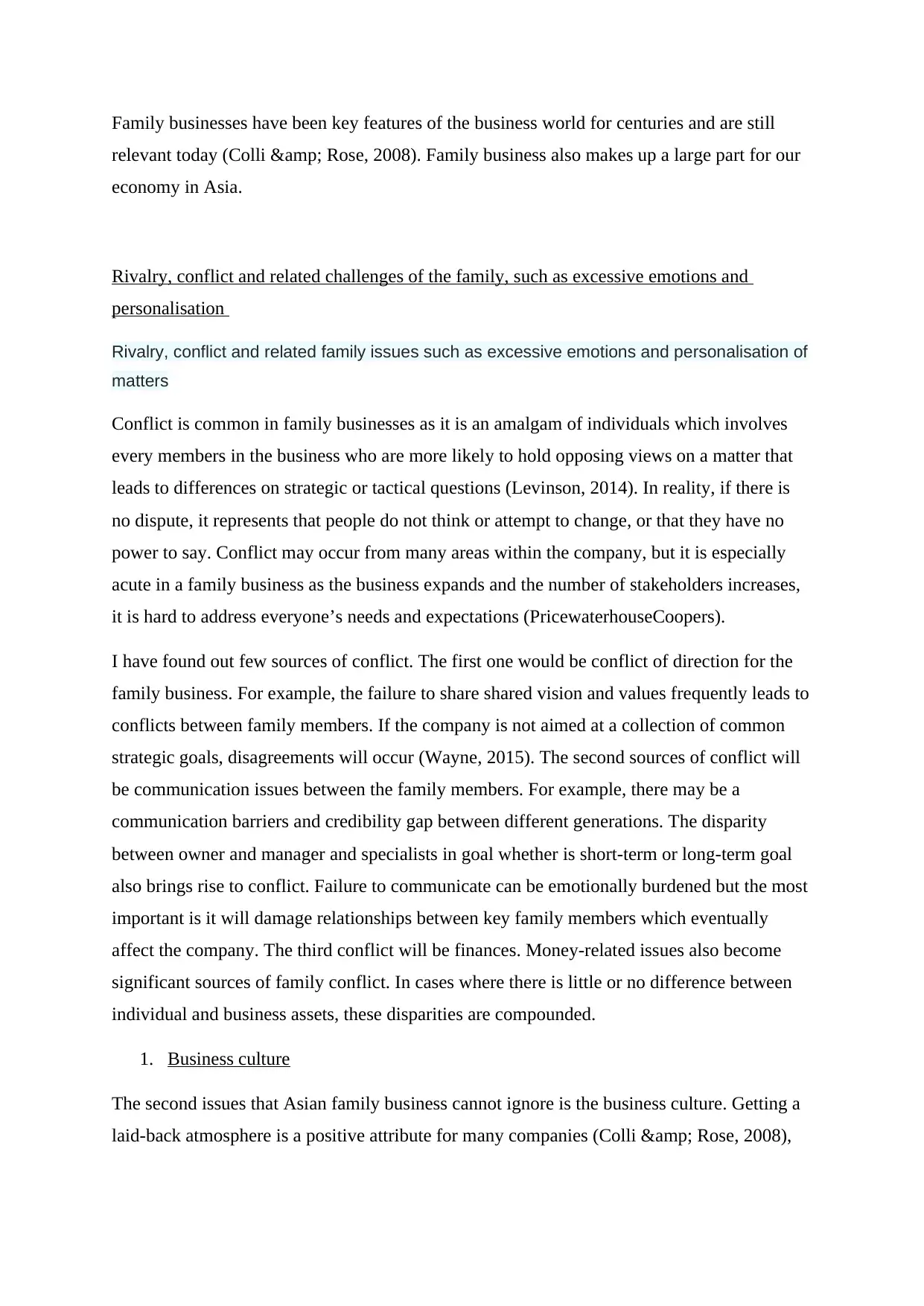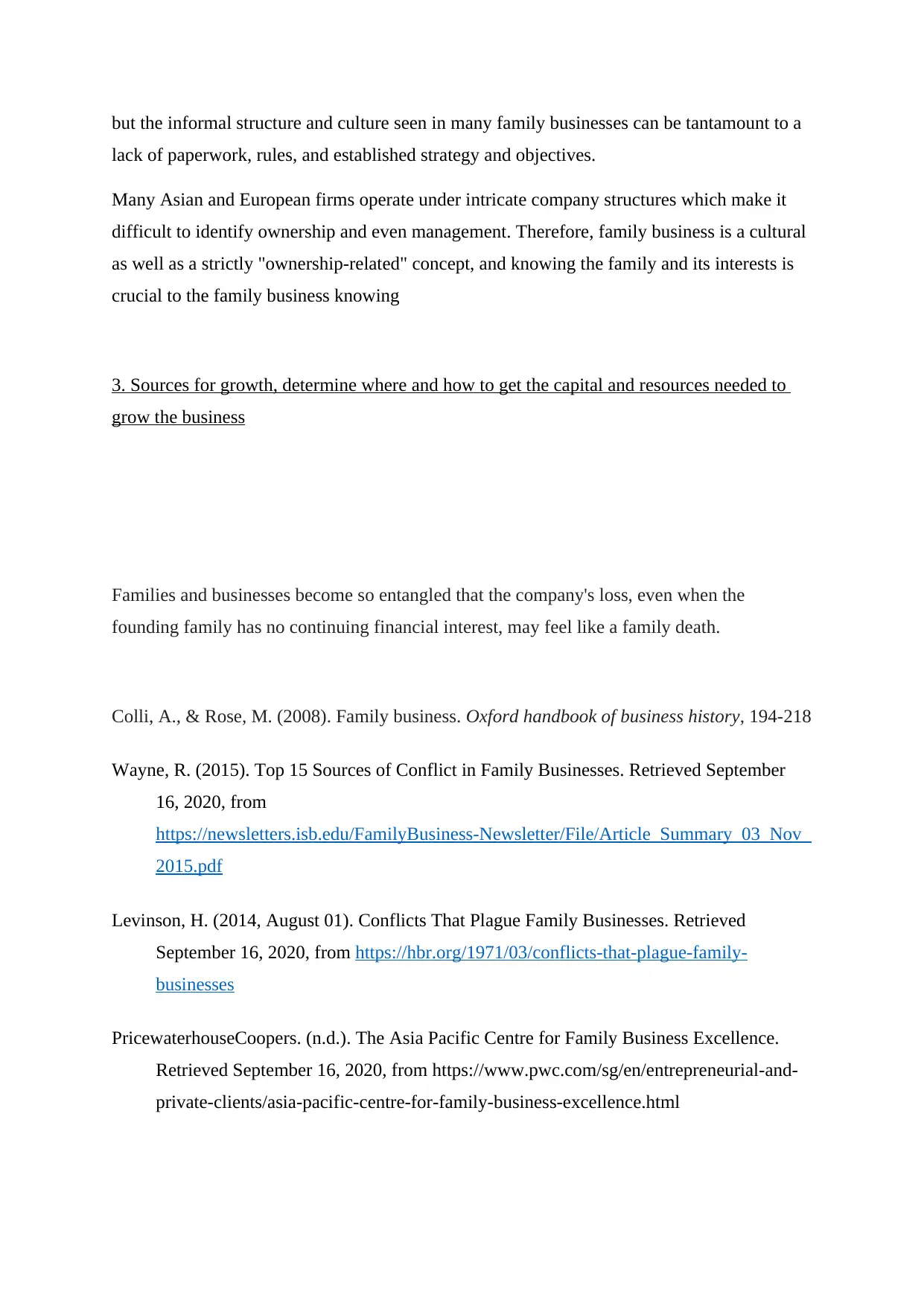Report on Conflicts, Culture, and Growth of Family Businesses
VerifiedAdded on 2020/11/30
|3
|640
|75
Report
AI Summary
This report delves into the multifaceted challenges faced by family businesses, particularly within the Asian context. It identifies key sources of conflict, including differing visions, communication breakdowns between family members across generations, and financial disagreements stemming from the entanglement of personal and business assets. Furthermore, the report examines the impact of business culture, highlighting the informal structures often found in family businesses, and the importance of understanding the family's interests. The report also touches upon the need for strategic growth, emphasizing the importance of securing capital and resources. It underscores the potential for conflicts and the need for effective management to ensure the long-term viability of these businesses. The analysis references several sources to support its claims and provides a comprehensive overview of the issues.
1 out of 3




![[object Object]](/_next/static/media/star-bottom.7253800d.svg)